The expired weeks since Christmas have stretched long–a barrage of travel and too many nights that lasted until morning. I will unravel the contents of those weeks some time, but not yet. For now, I just want to remember the holiday we spent in France, with family that will soon officially be my family.
The details of so many fêted meals blur together now, but I can tell you that there was foie gras d’oie, served alongside heady-sweet, wine-poached figs. It was an especially good year for figs in the garden. Comme d’habitude, the whole roast goose traveled no farther than the farm down the road, its rearer a family friend.
Oysters, plucked fat and clean from the ocean–we dislodged them from their craggy shells with the squat tines of oyster forks, and then spritzed them citrus-bright. We could not peel local jumbo shrimp fast enough, sautéed first in salty butter and then flambéed theatrically in Pernod.
We started meals with magnums of champagne, and finished with fine little glasses of Cognac, served in grandmother’s wedding china. The Christmas season at the Frenchman’s house is special in a way I had not experienced in the States. It makes sense–un-fatigued by Thanksgiving, bolstered by a storied history of well-crafted, terroir-focused foods, France really pulls out all the stops for Christmas. This was my forth year in France. The Frenchman’s family’s traditions are starting to become my traditions. Is this not the joy of expanding family
We eat these foods because they are special, yes, but also because they speak of winter. They match the season—what was not preserved in the summer months are what land and sea offer at this particular moment in time. Everything is circular–the figs are poached in the wine we then drink with the figs and foie gras. The roast goose, a fortifier against cold weather, harmonizes with more stewed figs. Everything has its place at the table.
I crafted this brunch spectacular just following our return stateside, in Virginia, where we traveled to spend New Year’s with college friends. (Isn’t the light spectacular? The ease of shooting this dish made me insanely jealous of those who have more than one, narrow window to work with.) It was inspired by the deliriously tasty apple and salted caramel crêpes I order when in Paris, the loaf of pain de mie I could not stop myself buying from this dreamland (even though it was not at all practical), and my favorite recipe for tarte tatin.
I acknowledge that this recipe is not dietetic. To be honest, the whole “resolution rabbit food” mantra makes me just a bit ornery. It is January, which at least in New York, means that it is still freezing cold outside. I still want warming dishes, sometimes. True, I have stopped eating foie gras with every meal–not my fault, totally the Frenchman’s fault–but I am also not planning on drinking kale juice until the cold thaws either.
It is a dangerous proposition, I think, to draw lines in the sand about what we eat based on the latest diet fad, or the position of Mars in relation to Saturn, or whatever. I try to build my diet based around what I feel like eating that day, around what my body is asking for. A couple of weeks ago, I wanted to make this french toast. This week, I have moved on to more vegetable-based offerings: Salad with shredded radicchio + romaine, roasted fennel and broccoli, and sautéed onions. Vegetable soup thick with carrots, garlic, potato, and cabbage. Soft scrambled eggs laced with chives, served with avocado over wheat toast. Hummus sprinkled liberally with za’atar, dipped with cucumbers and watermelon radishes. We will see what next week brings. Eating what I feel like keeps me coming back to the kitchen with fresh eyes, and fresh enthusiasm.
This french toast is ideal for a make-ahead brunch: you prepare the whole thing the night before, and then bake it off in the morning. It is sweet (and flavorful) enough not to require syrup. If you serve it with the smallest dollop of crème fraîche-soured whipped cream and a drizzle of salted caramel, it becomes fully dessert.
Serves 10. It’s rich, so 2 slices of toast per person works well:
4 medium apples (I used Granny Smith)
3 medium pears (Bosc or Butter)
1 stick (114 grams) (very) salted butter
1 cup (200 grams) + 3 tablespoons (36 grams) sugar, divided
1/8 teaspoon kosher salt
1 teaspoon (5 ml) vanilla extract
6 large eggs
3 cups (720 ml) whole milk
1/2 cup (120 ml) half & half
1 loaf pain de mie (or brioche)
Wash, peel, core, and quarter the apples and pears. Meanwhile, in a 9-inch saucepan, melt the butter and 1 cup of the sugar together over low heat. Stir until the sugar has (almost completely) dissolved into the sugar. Arrange the apple and pear pieces in the pan–at the start, you won’t be able to fit them all. As the fruit cooks down, there will be space in the pan–add the leftover pieces as you can. Turn the heat to just north of medium, until the butter starts to bubble. Allow the fruit to cook undisturbed for 10-12 minutes, until the butter turns golden, on its way to toasty brown. (This is not the time to check your email. You need to be watching the fruit quite closely, as the line between “perfectly caramelized” and “burnt” happens in a flash.) After 12 minutes, all the fruit should be in the pan; give everything a stir. Stirring occasionally, continue to cook the fruit for another 25 minutes, or until the apples and pears have broken down, and are the color of golden raisins. Take the pan off the heat; set it aside.
To a medium-sized mixing bowl, add the remaining 3 tablespoons of sugar, the kosher salt, and the vanilla extract. Add all of the eggs. Whisk to combine the first four ingredients. Slowly pour in the milk and the half & half, whisking as you go. Whisk until the liquid is smooth.
Cut the pain de mie loaf into 1/3-inch (1 cm) slices. Arrange the slices in a 9 x 13-inch casserole dish, in two even rows. Spoon the cooked fruit around and on top of the bread. Pour the custard over and around the bread and fruit. Cover the casserole with plastic or foil, and refrigerate overnight.
Heat the oven to 375F (190C). Bake the french toast, uncovered, for 40 minutes, or until the custard is mostly set, but still soft or runny in places. Serve warm.
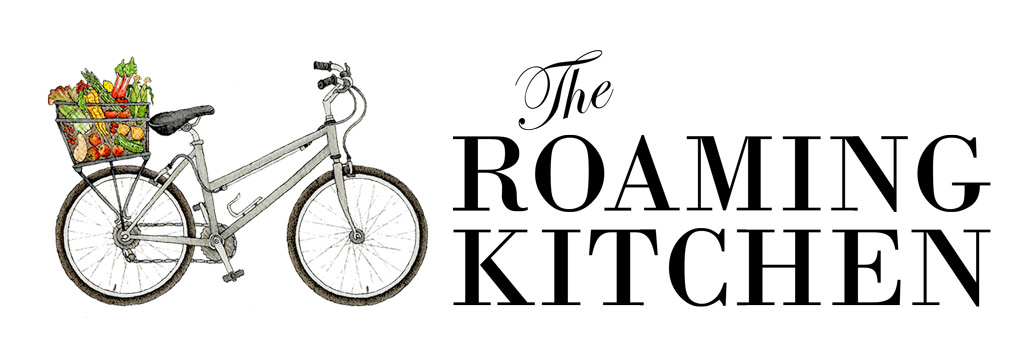
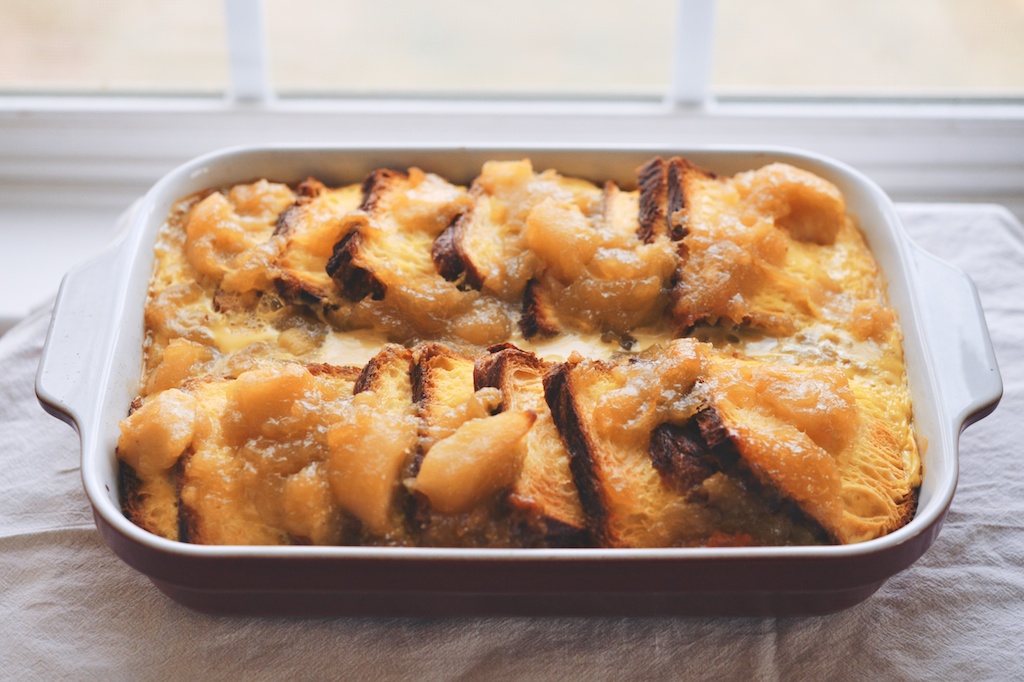
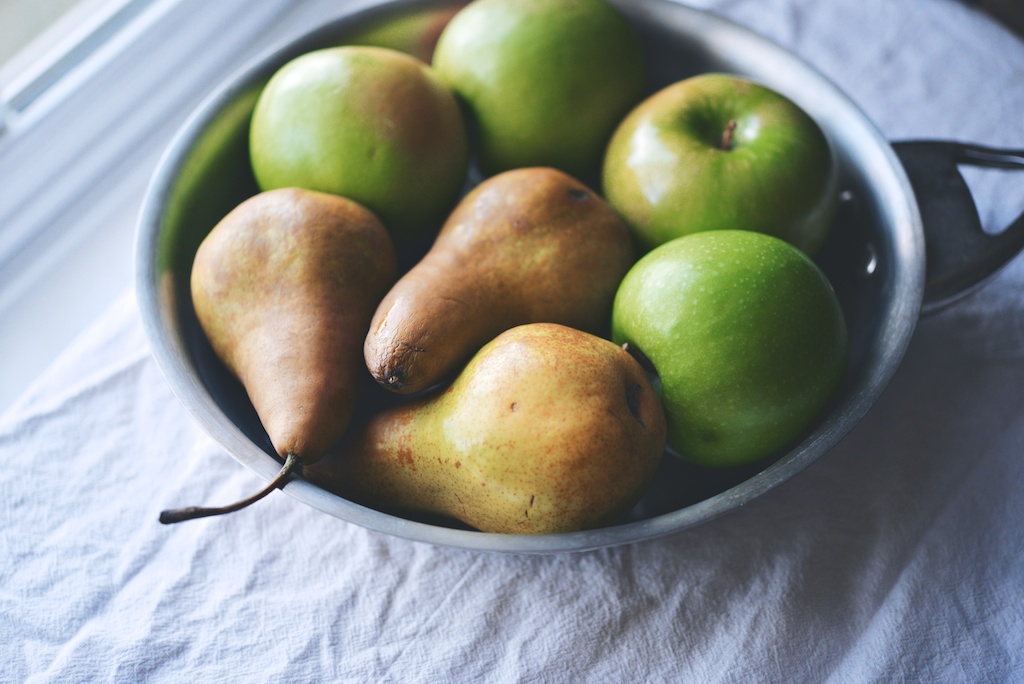
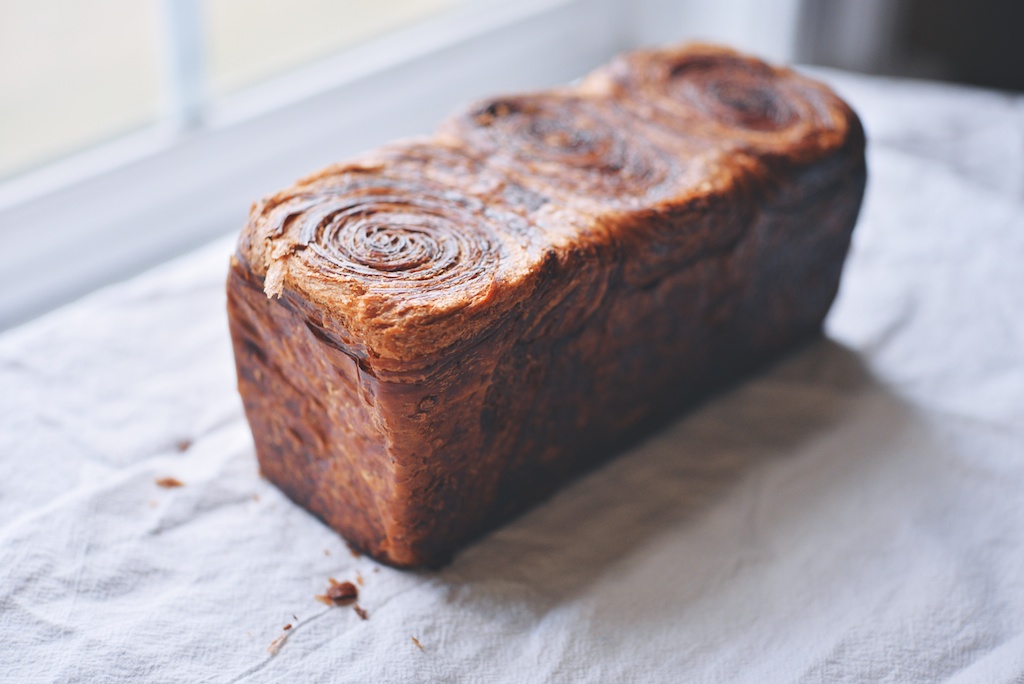
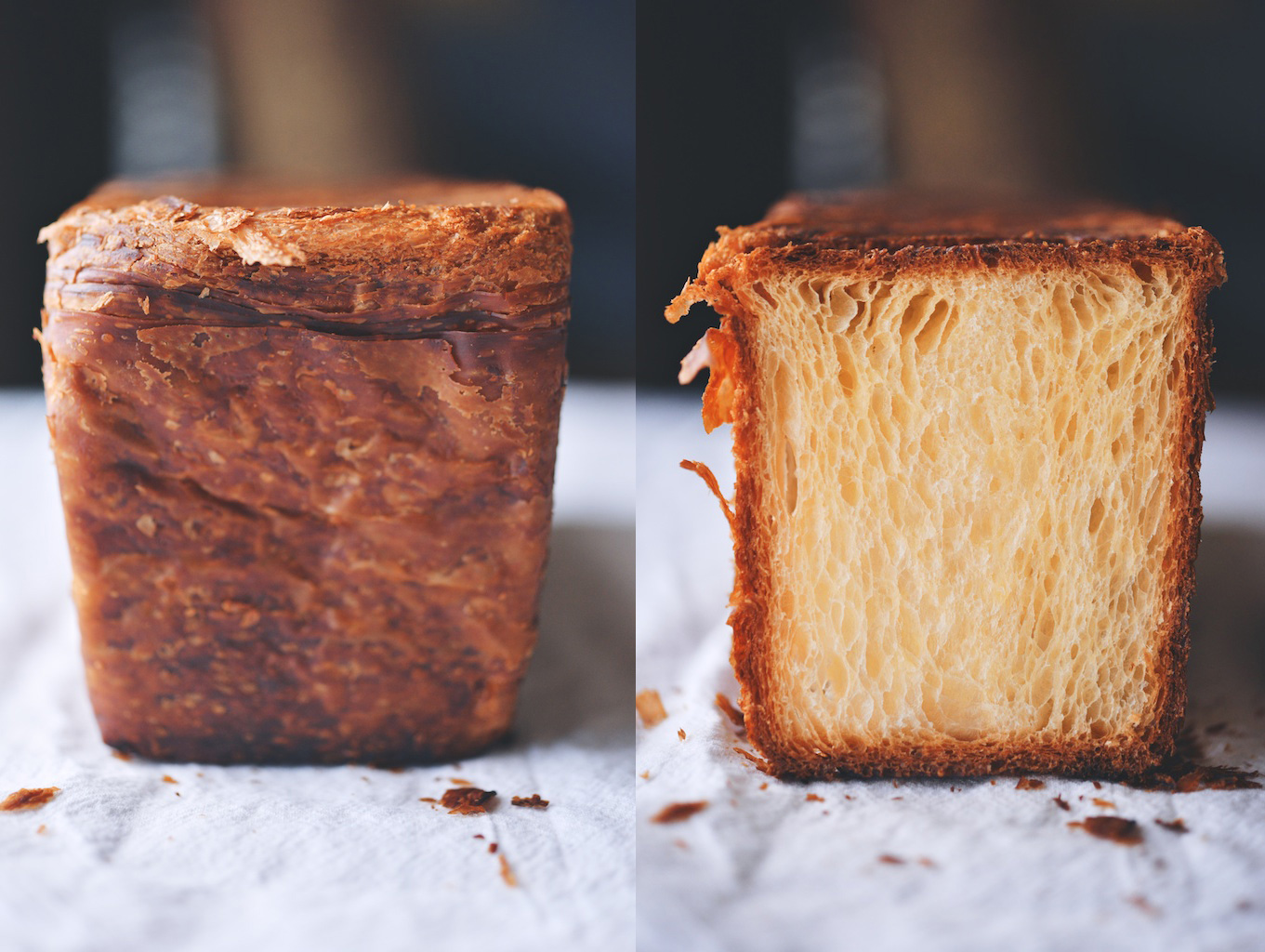
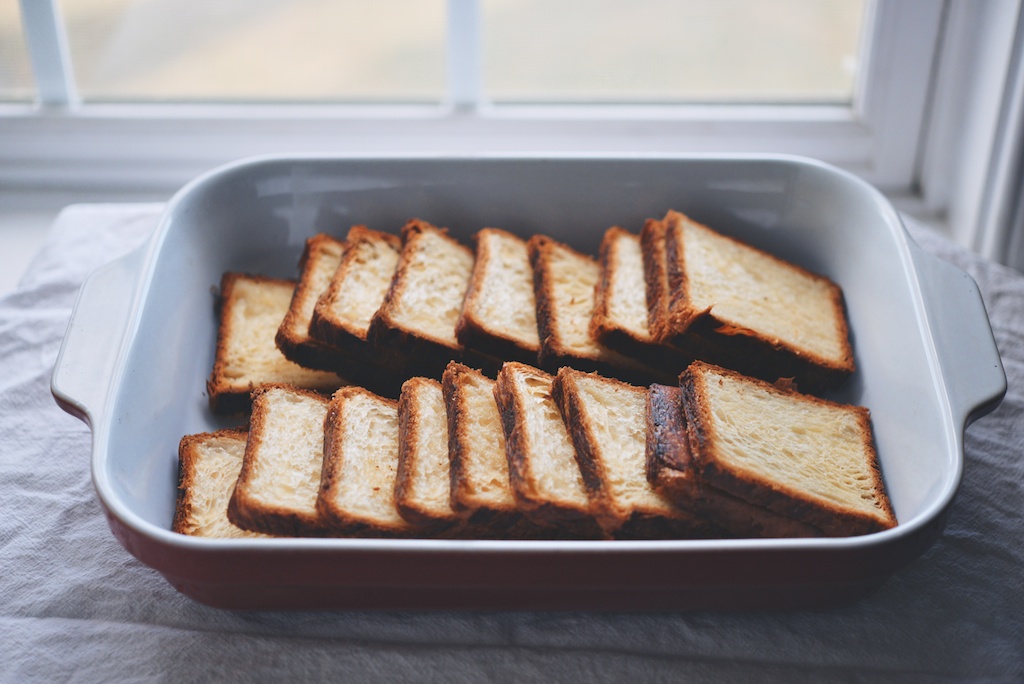
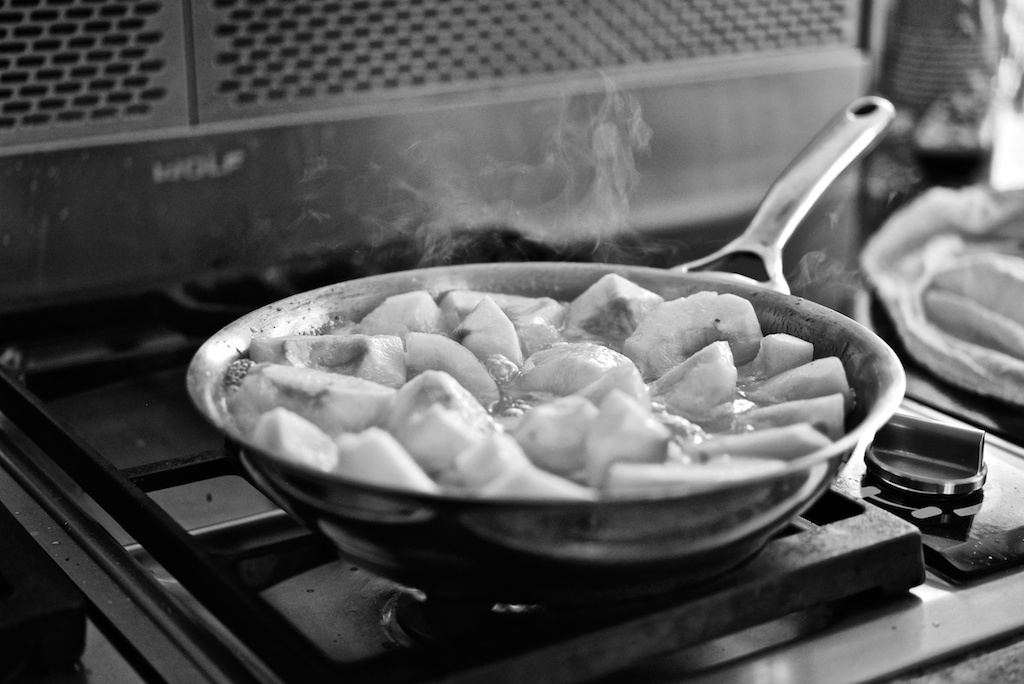
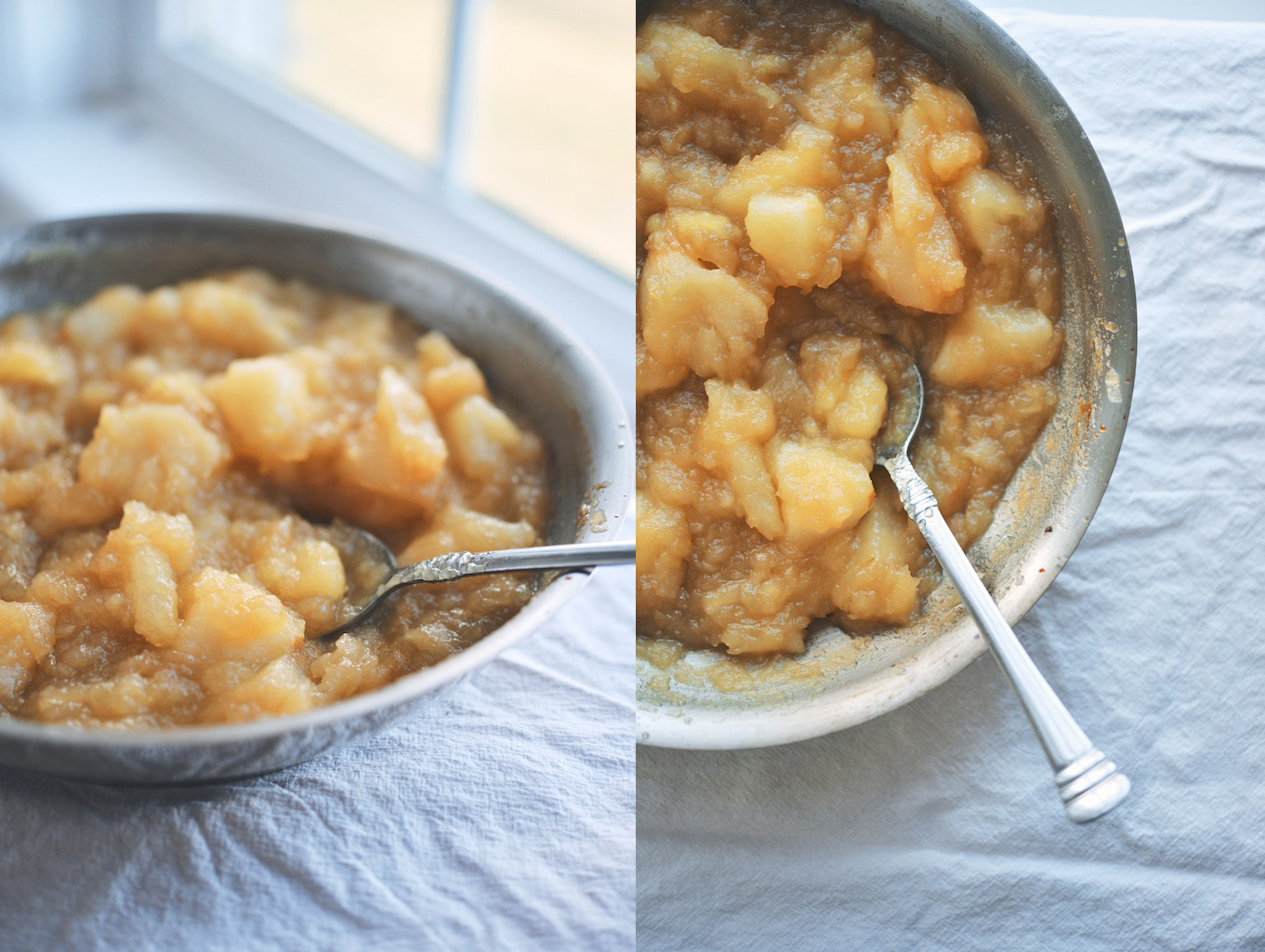
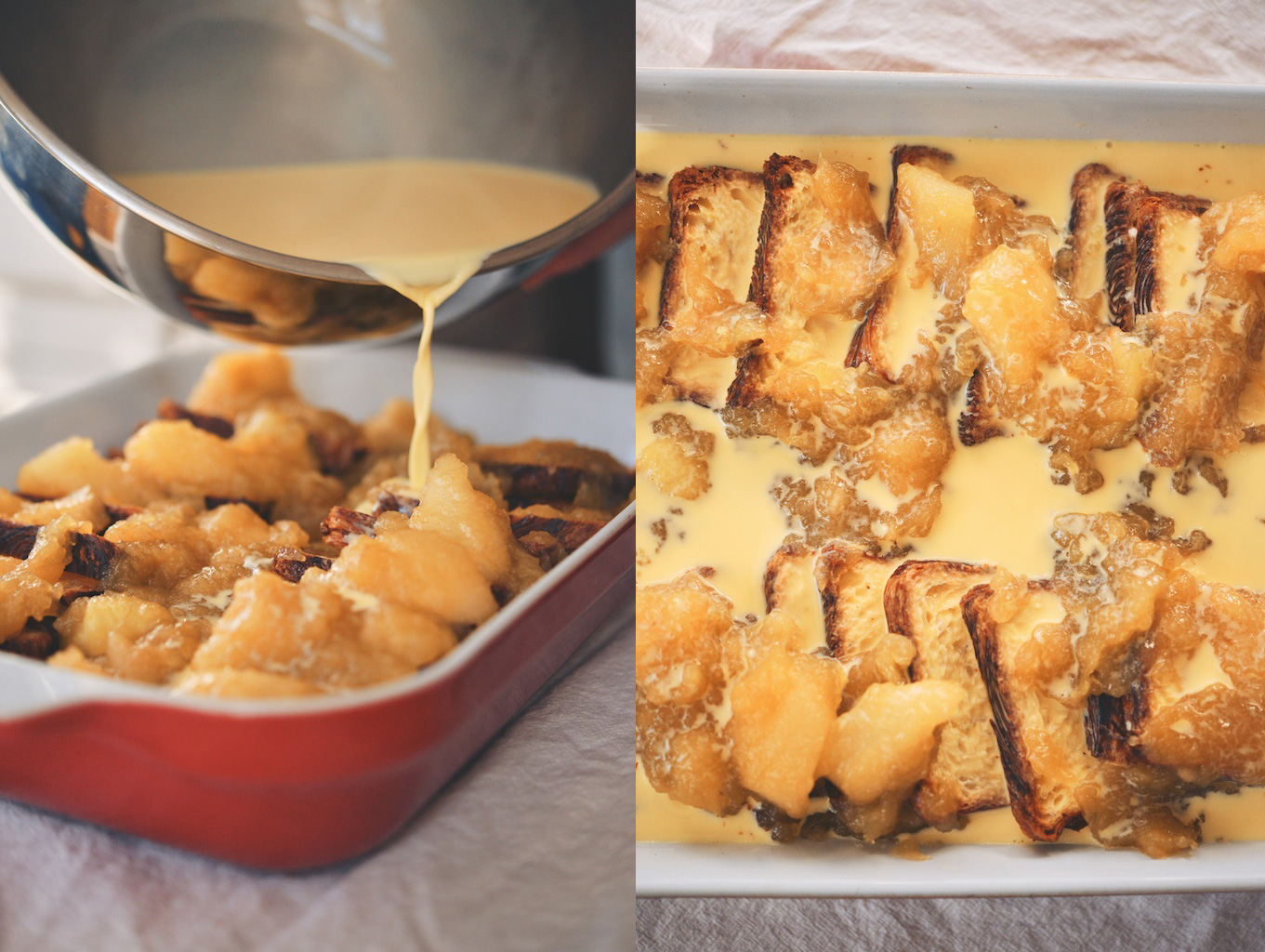
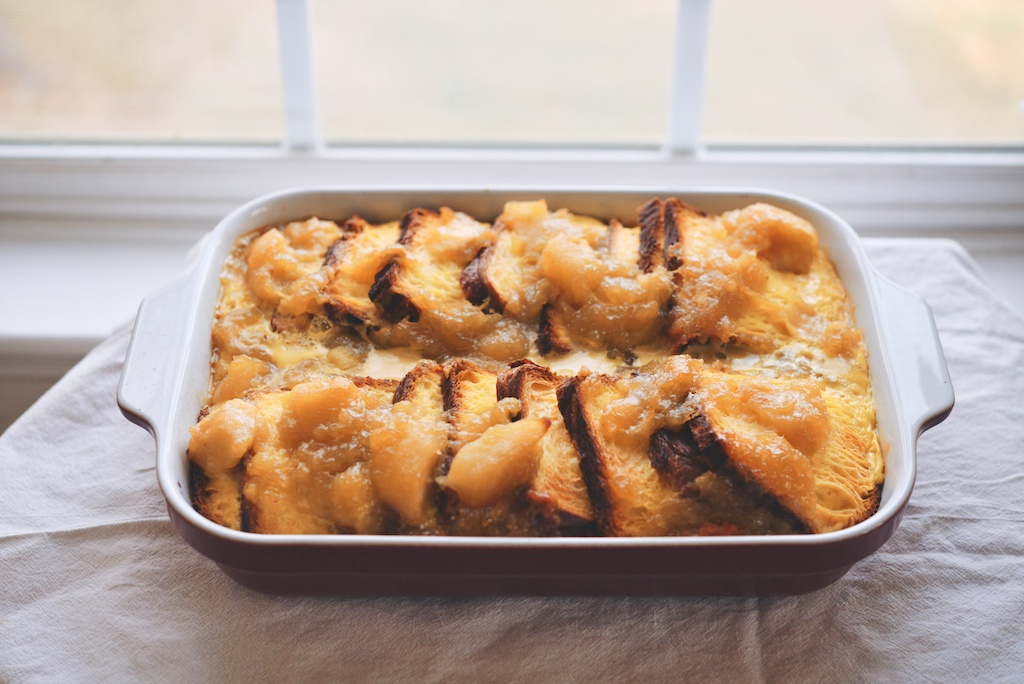
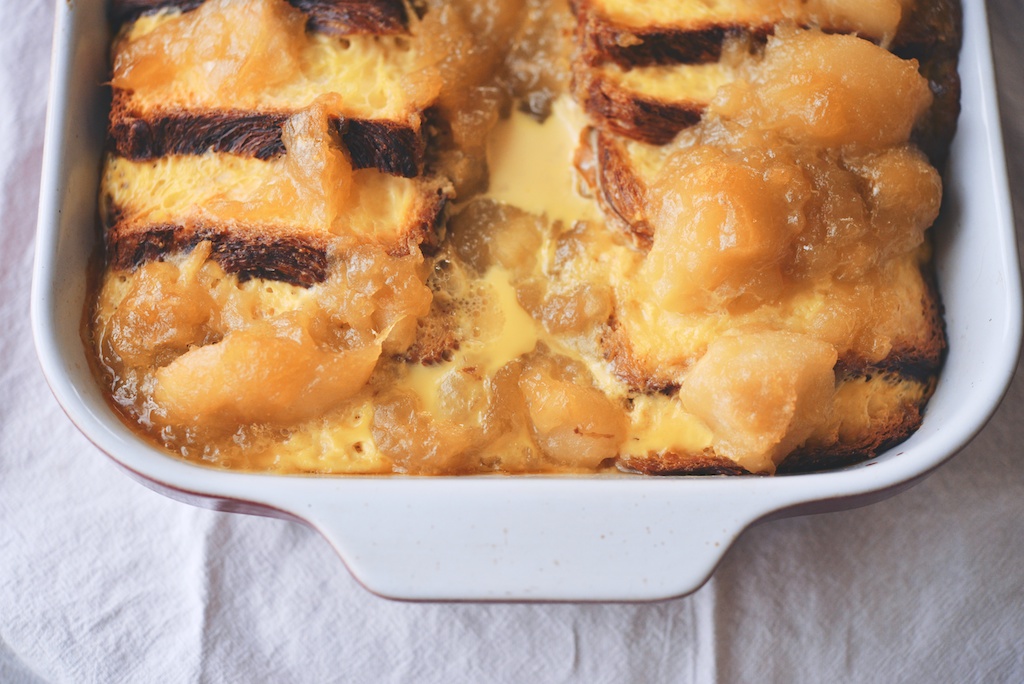
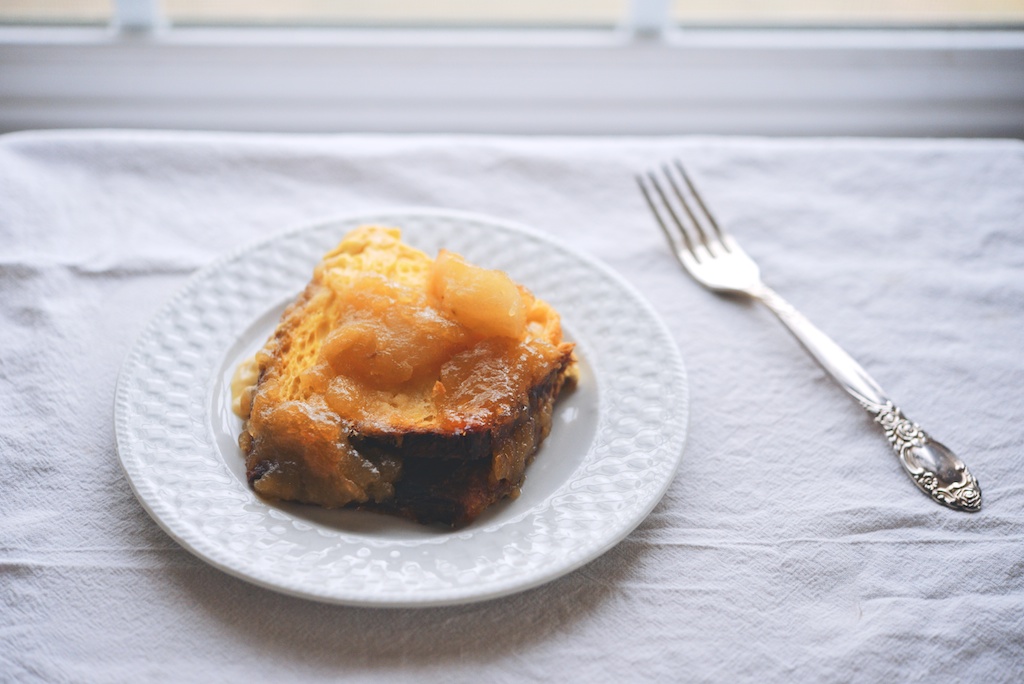
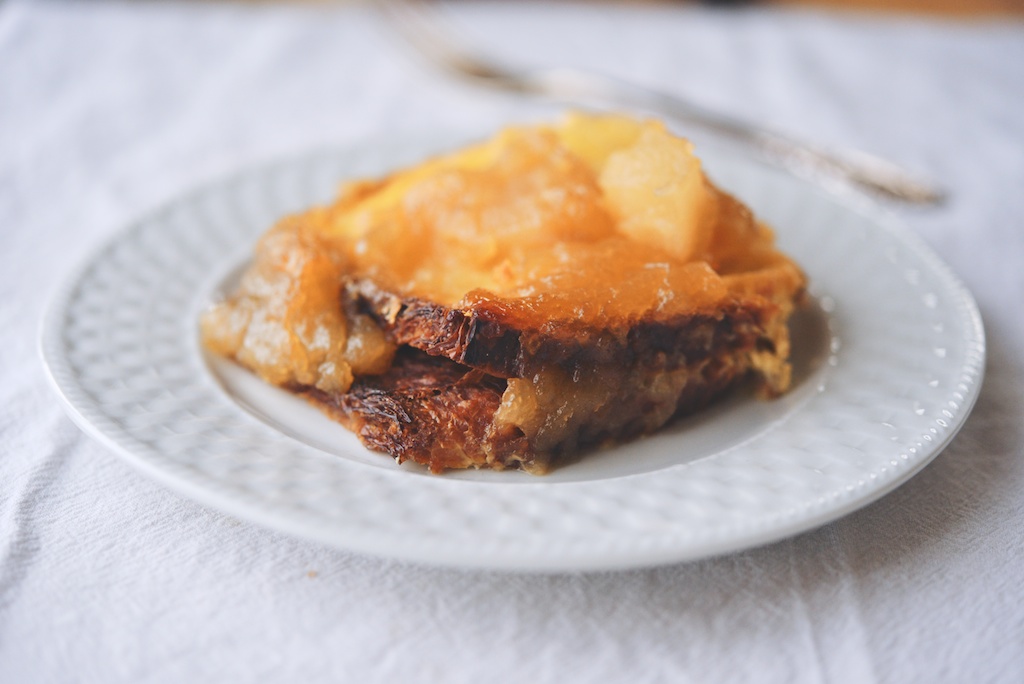
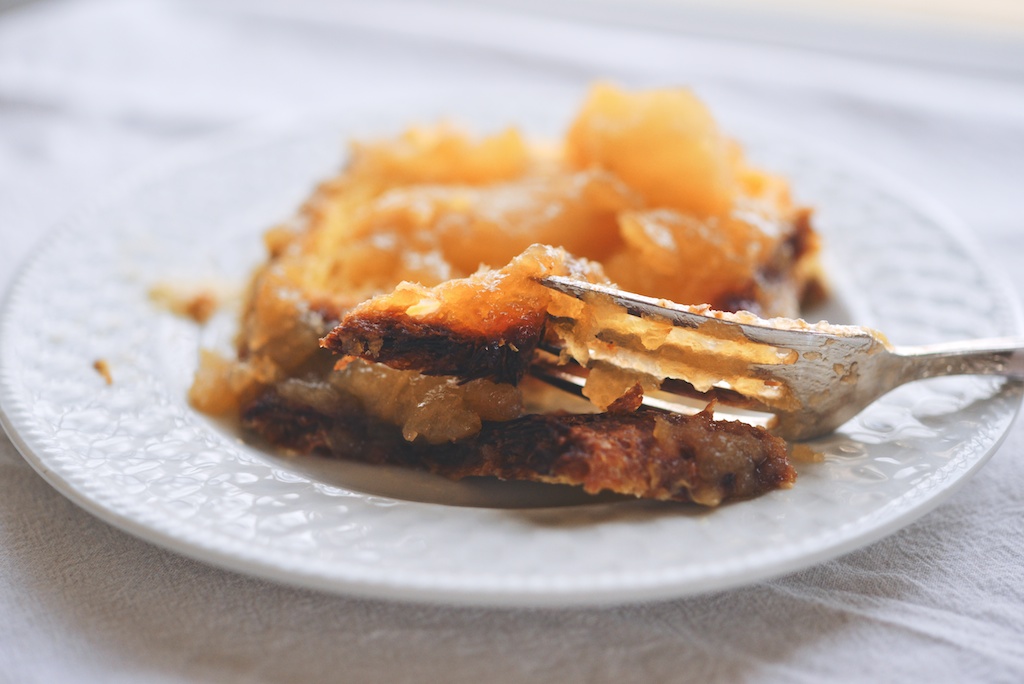
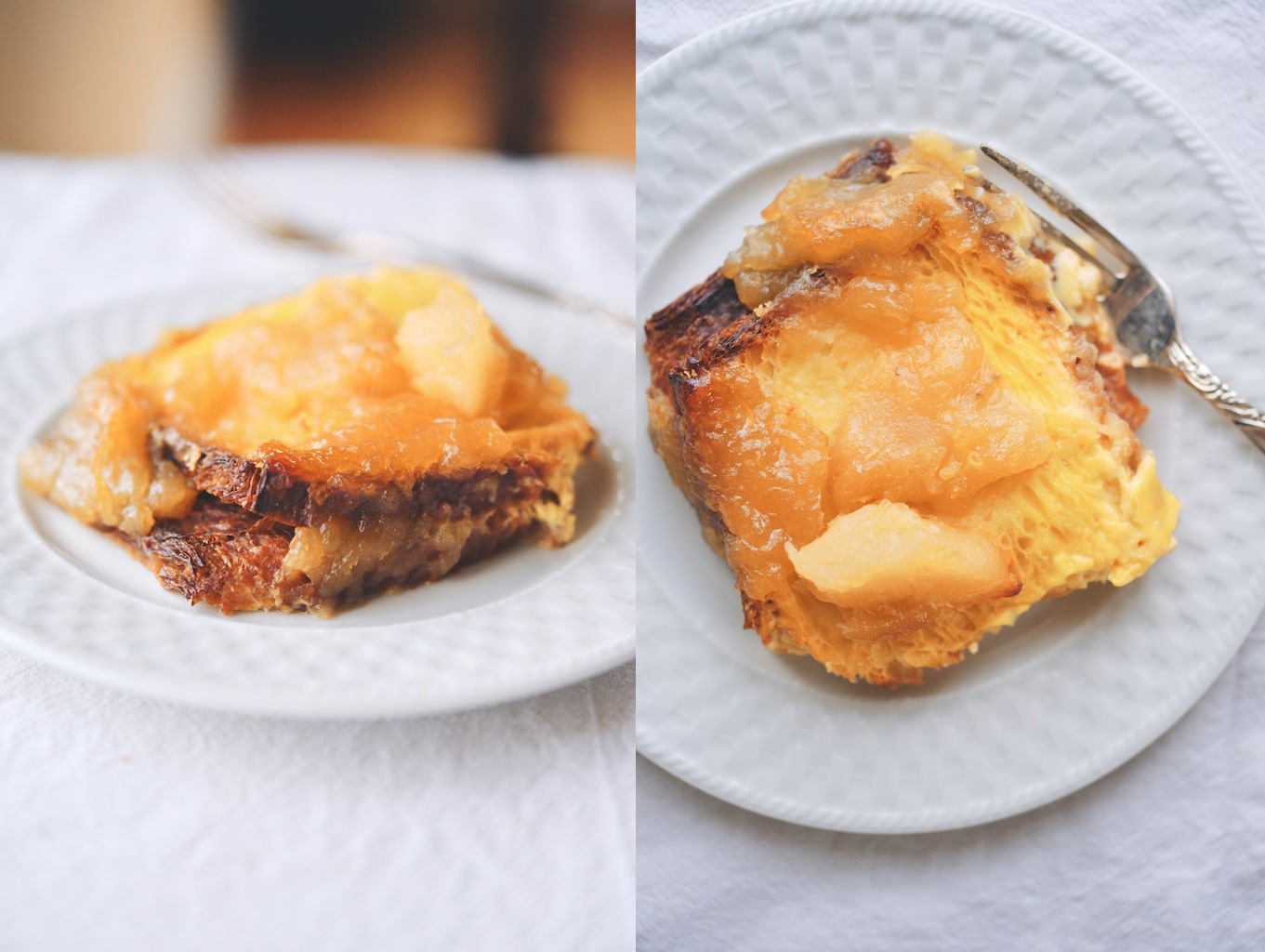
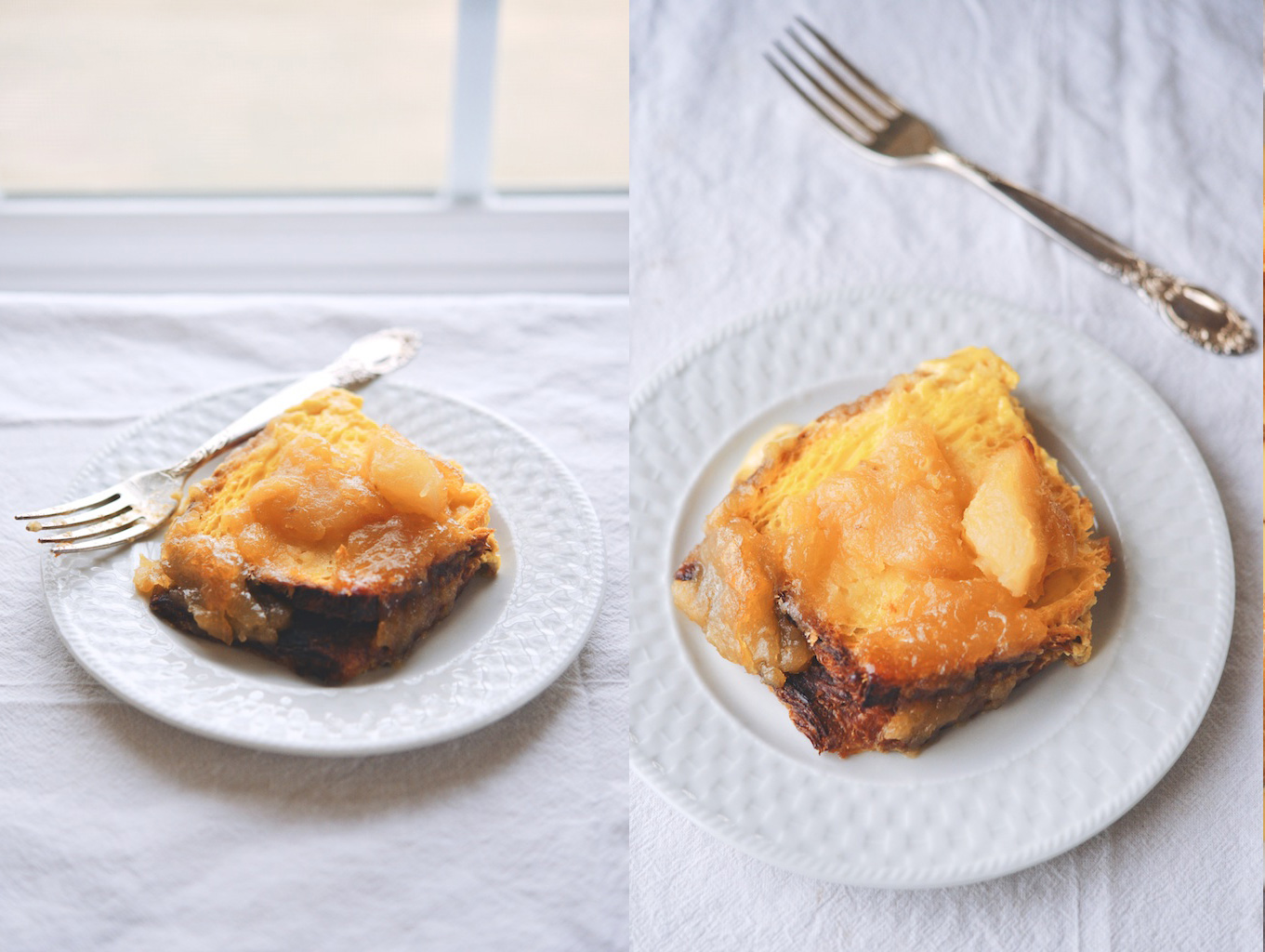
That looks delicious, and it’s such a great twist on french toast! Thanks for sharing.